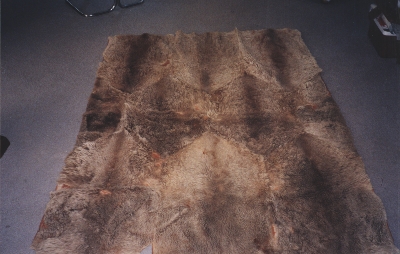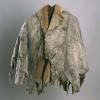Quilt No.909MT - Marlene Toomey

Frederick Roy Lawford shot the roos, skinned them, tanned the skins and made the rug in Goulburn NSW in 1928. It was owned by his wife Marjorie Annie Lawford and is now owned by his daughter Marlene Toomey. It is still used.
"My father, Roderick Roy Lawford made this rug in approximately 1928. Dad culled the kangaroos from one of the properties he leased in the Goulburn district. We all lived on our own farm in North Goulburn N.S.W., opposite the famous Goulburn Prison. As well as farming our property and those he leased, Dad worked full time at the Baxter's Shoe factory as a tanner.
Dad skinned the kangaroos and tanned the hides himself and then cut the pelts out��..He then stitched them by hand, using thick cotton thread and oversewing the seams.
The quilt was often used to keep his five children warm in the bitter cold winters. I have memories of my mother placing it over my knees as I sat in front of the fire (especially when I was sick). If Mum placed it with the fur side out, I would turn it over as I loved to feel the fur against my skin.
The rug is now an integral part of my own home and I am sure that my children (all grown up now) have treasured memories of the special warmth this rug gives. I am currently using it to snuggle my grandchildren in when they visit in the cooler months. It is better than any heater you can buy, as it is not only warm in itself, it provides a topic of conversation and the special warmth of family love."
[Marlene Toomey May 2000]







